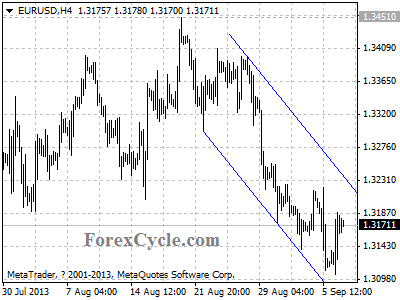By WallStreetDaily.com
China’s pollution.
It’s a global concern.
It’s gotten so bad that, earlier this week, authorities had to pull 220,000 pounds of dead fish from the Fuhe River.
It’s so bad that scientists now believe it to be responsible for the huge surge in the infertility rate among the female populace. Indeed, the infertility rate among Chinese women rose to 12.5% in 2010, from just 3% two decades ago.
You’re going to be floored when I tell you about the new technology coming to the rescue. Unfortunately, though, I’m still not done describing the grim reality.
The air quality scale at the U.S. embassy in Beijing hit 755 earlier this year. Since the maximum level is supposed to be 500, the level of air pollution in China is literally off the charts.
The city had to shut down all nearby factories and order half of its cars off the road to accommodate the 2008 Summer Olympic Games. Some athletes still complained about air that burned their lungs and nasal passages.
None of this is a secret, or a shock, to Chinese policymakers. It’s an epidemic that the country is spending wildly to try to resolve.
| Pollution? What pollution? One tiny company is ready to end global warming forever. It’s on the brink of being among the most powerful companies in the world. Yet it still trades for only $2. Get full access via The Presidents Club, along with $527 for test-driving the membership. Access ends in a few hours. |
Supply Glut Cripples An Industry
The government recently announced that it will invest $275 billion – an amount equal to Hong Kong’s GDP – over the next five years to fight air pollution.
China’s State Council has announced plans to make the energy-saving sector a “pillar” of the economy by 2015. Under the new plan, the environmental protection sector will grow by 15% on average annually, reaching an output of $735 billion.
And, of course, everyone knows about the generous advantages the country gives its solar sector.
Well, China doubled down on its commitment to solar in June, when it increased its target for solar power generation by a factor of five. Indeed, China now plans to have 35 gigawatts of solar capacity by 2015 – five times more than the seven gigawatts it had last year.
The move was also intended to combat anti-dumping duties employed by the United States and Europe – not to mention a huge supply glut that’s crippled the industry.
| One tiny company’s new technology is eradicating smog in tests, which would enhance the efficiency of solar. Yet it still trades for only $2. It’s on the brink of being among the most powerful companies in the world. Get full access via The Presidents Club, along with $527 for test-driving the membership. Access ends in a few hours. |
You see, the country’s solar manufacturing capacity of about 45 gigawatts exceeds global demand by about 10 gigawatts. So Chinese solar companies have been running their factories at 60% capacity in an attempt to curtail an excess supply of solar cells.
As a result, major Chinese manufacturers have been posting losses over the past two years.
To keep manufacturers from going bankrupt, state-run banks have extended billions of dollars of credit. And total government backing reached more than $2 billion last year. And by raising its solar power capacity to 35 gigawatts, China is creating about $16 billion in new market demand.
Of course, the fact that Chinese solar companies rely on government support makes investing in them a dicey proposition.
For instance, Yingli Energy Holding Co. (YGE) sports a 52-week range of $1.25 to $5.72. And LDK Solar’s (LDK) range is $0.71 to $2.32.
That’s pretty indicative of solar companies worldwide, which is understandable for a fledgling industry that’s something of a political hot button.
So what’s an investor to do?
Simple. Look for companies that are innovating in the space.
Profit From Pollution
Maxwell Technologies (MXWL), for instance, is a leading manufacturer of ultracapacitors (UCs) – a burgeoning new technology that increases energy efficiency.
| Polar bear friendly! The battle against pollution could soon be a non-issue. One tiny company’s new technology can turn a cloud of smoke into nothing. Yet it still trades for only $2. It’s a genuine threat to anyone profiting off of smog, like manufacturers of air filters. Get full access via The Presidents Club, along with $527 for test-driving the membership. Access ends in a few hours. |
Simply put, UCs store and redistribute energy. So they’re much like batteries. With one crucial difference…
Batteries rely on chemical reactions, which limit their ability to release energy when it’s most needed.
UCs, on the other hand, use electrolytes and carbon electrodes to create an electric field that’s capable of capturing and holding a charge in a very short amount of time. UCs can be recharged just as quickly, often in a matter of seconds.
And unlike conventional batteries, they can be recharged hundreds of thousands of times without ever wearing out.
That makes UCs the ideal technology for optimizing inconsistent alternative energy sources, like solar and wind. They can harness excess energy when the sun is shining or the wind is blowing, and then release it when it’s not. And they can do it better than traditional batteries.
But if you’re really looking to profit from China’s massive clean-up effort, you should take a look at my latest find. Forget simply clearing the skies, I believe the company’s technology could end global warming.
You can find out more about that here. But only for a few more hours.
Ahead of the tape,
Louis Basenese
The post It Kills Fish, Children and Olympic Dreams – Yet Creates Opportunity At the Same Time appeared first on Wall Street Daily.
Article By WallStreetDaily.com
Original Article: It Kills Fish, Children and Olympic Dreams – Yet Creates Opportunity At the Same Time


